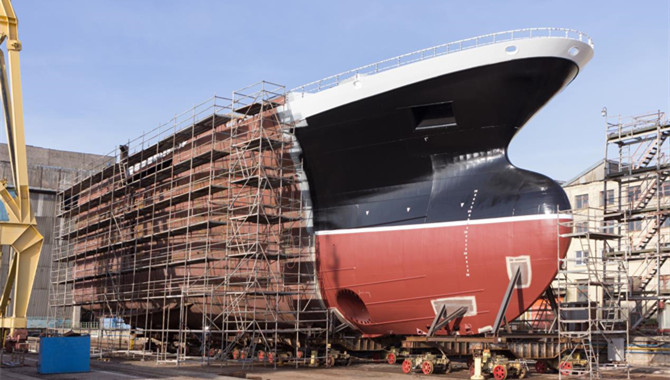Optimarin is establishing a manufacturing base in China to boost the availability of its well-proven ballast water treatment system (BWTS) for the Asian shipbuilding market as it also targets further retrofits of the existing fleet.
The leading Norwegian BWTS supplier is now pursuing partnerships with several Chinese suppliers to focus on high-quality production of BWTS components at reasonable cost for delivery to regional yards, according to Optimarin’s Executive Vice President Sales & Marketing Tore Andersen.
“We are conducting due diligence when selecting new suppliers to verify that components meet our required high-quality standards and thereby ensure the proven reliability of our robust system is maintained, while making it available at a reasonable price as we expand in this market,” he says.
“In addition, we are keeping our ‘dual-supplier strategy’ in place to mitigate the risks of potential delivery issues, and make sure we can get systems and components to our customers on time.”
Compact modular solution for ease of installation
Andersen believes Optimarin is well-placed to secure newbuild orders for its BWTS as the flexible modular system can be easily installed on all types of vessels - with installation costs in many cases around half of other systems - and typically has minimal commissioning issues.
The so-called Optimarin Ballast System, which can be delivered as a compact skid-mounted solution, comes with a full documentation package and verified compliance with the IMO’s Ballast Water Management Convention, as well as with US Coast Guard type approval.
The shipbuilding industry has seen a resurgence of ordering activity as global trade has rebounded in the wake of the coronavirus pandemic, with an increasing shift towards green-fuelled newbuilds due to new environmental regulations.
Lower-cost Asian yards - mainly in China, South Korea and Japan - have secured 70% to 80% of orders for vessels in various segments including containerships, bulkers, tankers and LNG carriers that are currently under construction, with scheduled delivery in the 2025-27 timeframe.
Andersen points out that these newbuilds will have to be delivered with an IMO-compliant BWTS installed to meet regulatory requirements.
China presence a ‘big market advantage’
China has emerged as the dominant player among the big three shipbuilding countries, having secured nearly half of all newbuild orders in recent years.
Andersen believes having a local supplier presence in China will give Optimarin a “big market advantage” in terms of competitive price and short delivery time for yards, while it also provides expertise in the project development phase and can assist with a ballast water management plan.
“The main priorities for yards with a BWTS supplier are the ability to deliver on time and at the lowest cost. But we are also seeing a growing tendency where shipowners determine which system they want installed due to historic reliability issues they may have had with other systems,” he says.
“Furthermore, having in place a global after-sales network for BWTS maintenance and support is also an increasing priority for shipowners to ensure operational uptime.
“Consequently, Optimarin is now taking orders in the newbuild market where especially European owners are looking for reliable systems with low operational cost and a strong service network.”
Targeting more retrofit orders
He says the company has fast and responsive 24/7 after-sales service with global coverage and spare parts availability. Its BWTS has a 2.5-year service interval, while onboard maintenance can also be performed by crew due to the simple construction of the intuitive and easy-to-operate system.
It has been further enhanced with OptiLink, a cloud-based digital application that enables real-time monitoring of the BWTS, data generation for improved planning of ballasting operations and remote connectivity for online software updates of the system, as well as data-sharing for compliance.
Optimarin is meanwhile still focusing on the busy retrofit market where it aims to sell as many as 700 systems over the next two years, backed up by a fast-track delivery model to meet the IMO deadline, according to Andersen.
He says the company is also seeing demand for retrofits of earlier BWTS retrofits as competing systems have fallen short of shipowners’ expectations in terms of reliability and support.
“This shows that it is important to choose the right maker from the beginning,” Andersen says, adding the company has further product expansion plans up its sleeve in the area of water treatment.
The opinions expressed herein are the author's and not necessarily those of The Xinde Marine News.
Please Contact Us at:
media@xindemarine.com


 Ningbo Containerized Freight Index Weekly Commentar
Ningbo Containerized Freight Index Weekly Commentar  Ningbo Containerized Freight Index Weekly Commentar
Ningbo Containerized Freight Index Weekly Commentar  Ningbo Containerized Freight Index Weekly Commentar
Ningbo Containerized Freight Index Weekly Commentar  BIMCO Shipping Number of the Week: Bulker newbuildi
BIMCO Shipping Number of the Week: Bulker newbuildi  Ningbo Containerized Freight Index Weekly Commentar
Ningbo Containerized Freight Index Weekly Commentar  Ningbo Containerized Freight Index Weekly Commentar
Ningbo Containerized Freight Index Weekly Commentar